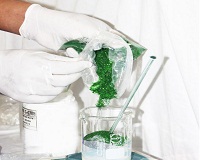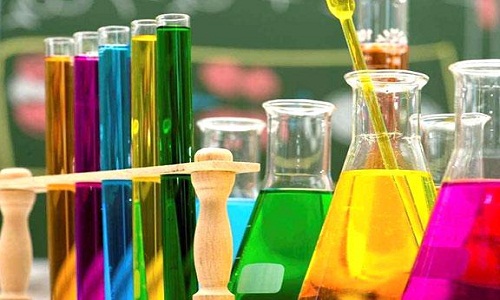"As per Business Wire, the global textile chemicals market is expected to reach $27.56 billion by 2022 from $21.80 billion in 2016. The market is expected to grow at a CAGR of 3.4 per cent during the period. With designers focused on grabbing a bigger share of the market, designs are becoming fancier requiring more processing; increasing chemical use and other operational footprints. Allied Market Research data shows, significant factors are contributing to the growth of textile chemicals market. These include development of apparel industry, rising consumer demand for innovative and styled clothing products, evolution of environmentally friendly chemicals required by textiles industries, and development of packaging industries, that require a large amount of textile chemicals".
 As per Business Wire, the global textile chemicals market is expected to reach $27.56 billion by 2022 from $21.80 billion in 2016. The market is expected to grow at a CAGR of 3.4 per cent during the period. With designers focused on grabbing a bigger share of the market, designs are becoming fancier requiring more processing; increasing chemical use and other operational footprints.
As per Business Wire, the global textile chemicals market is expected to reach $27.56 billion by 2022 from $21.80 billion in 2016. The market is expected to grow at a CAGR of 3.4 per cent during the period. With designers focused on grabbing a bigger share of the market, designs are becoming fancier requiring more processing; increasing chemical use and other operational footprints.
Growth drivers
Allied Market Research data shows, significant factors are contributing to the growth of textile chemicals market. These include development of apparel industry, rising consumer demand for innovative and styled clothing products, evolution of environmentally friendly chemicals required by textiles industries, and development of packaging industries, that require a large amount of textile chemicals.
A US-based market research and consulting company, Grand View Research views that the US product market for textile chemicals is anticipated to grow at a CAGR of 3.8 per cent from 2016 to 2025 to reach a net worth of $930.1 million by 2025. Low price of fast fashion garments is also increasing consumption of technical textiles. As garment makers are always under pressure to reduce costs, they opt for low price chemicals in their fabrics. This is increasing health and environment concern. To prevent this, retailers need to promote high-value less hazardous chemicals in the value chain.
Home furnishing applications drive up market
The Grand View Research study also points out home furnishing applications dominated the textile chemicals market in 2015, 2016 and 2017. Coating and sizing chemicals were the largest consumed products category with a total worth of $6,353.5 million, accounting for over 30 per cent of global demand in 2015. Printing being the last step and, the popularity of printed fabric is increasing. The key players in textile chemicals market include: Covestro AG, Lonsen Inc., Archroma, BASF, Dow Chemical Company, Bayer AG, Huntsman International LLC and Sumitomo Chemicals. And there are many other major players.
market in 2015, 2016 and 2017. Coating and sizing chemicals were the largest consumed products category with a total worth of $6,353.5 million, accounting for over 30 per cent of global demand in 2015. Printing being the last step and, the popularity of printed fabric is increasing. The key players in textile chemicals market include: Covestro AG, Lonsen Inc., Archroma, BASF, Dow Chemical Company, Bayer AG, Huntsman International LLC and Sumitomo Chemicals. And there are many other major players.
Asia-Pacific: Strong growth centre
The report further highlights, Asia-Pacific region is the fastest growing market in textile chemicals space. In 2017, the Asia Pacific market had a share of 63.35 per cent in the global textile chemicals market in terms of consumption. The report by the Transparency Market Research reveals China and India accounted for more than 70 per cent share in Asia Pacific. Bangladesh consumes about $800 million worth of dyes and chemicals every year.
Limitations of the industry
The major limitations of the textile chemicals include adverse effects of chemicals on the environment and stringent environmental regulations. However, recent innovations, which embed innovative ideas of anti-microbial, luxurious, and stain-resistant fabrics, allow these chemicals to reach a wider segment of audiences. Emerging technology such as the establishment of sterilised textiles is expected to increase competition in the years to come.
The European Union implemented the Integrated Pollution Prevention and Control (IPPC) directive from January 2008, along with Emissions Trading System (ETS) and regulation on registration, evaluation, authorization, and restriction of chemicals. Initiatives like REACH have significantly reduced the demand for textile chemicals in Europe. Countries such as the Netherlands and Germany have banned some textile chemicals that pose a threat to the environment and human health.












